As a leading figure in the "new perennial" movement, pioneering Dutch landscape and garden designer Piet Oudolf needs no introduction. He has realized living landscapes for high-profile projects around the world-including New York’s High Line, the Venice Biennale, and Hauser and Wirth’s new Balearic outpost on Isla del Rey.
The esteemed Piet Oudolf in his garden for Vitra.
For his latest oeuvre, Oudolf designed an immersive, 43,000-square-foot garden of 30,000 plants for the Vitra Campus in Weil am Rhein, Germany. The site is home to a trove of architectural works by the likes of Tadao Ando, Zaha Hadid, Herzog & de Meuron, and Renzo Piano-and the flourishing landscape complements and contrasts with these distinctive buildings.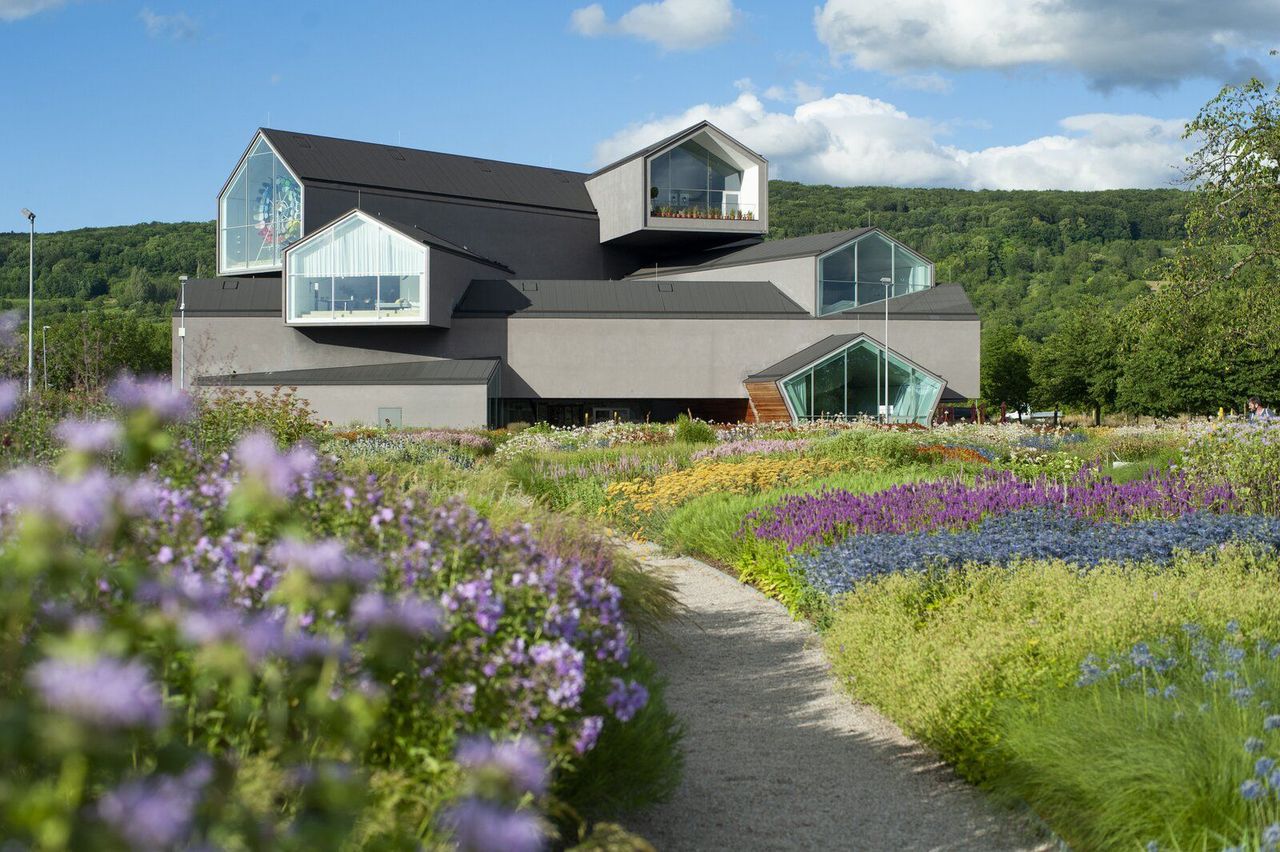
Oudolf sees the garden as a centerpiece for the Vitra Campus.
Commissioned by Vitra chairman emeritus Rolf Fehlbaum, Oudolf’s composition will develop over the decades to come, keeping step with the next phase of the company’s sustainability commitments under the guidance of CEO Nora Fehlbaum.
"Nature now-more than ever-has become like a balm for the soul," notes Robert Wolf, Head of Marketing for Vitra in North America. "The Oudolf garden seems to tap into the pulse of what’s going on right now, where people want to recharge and restore in a green, nature-filled environment."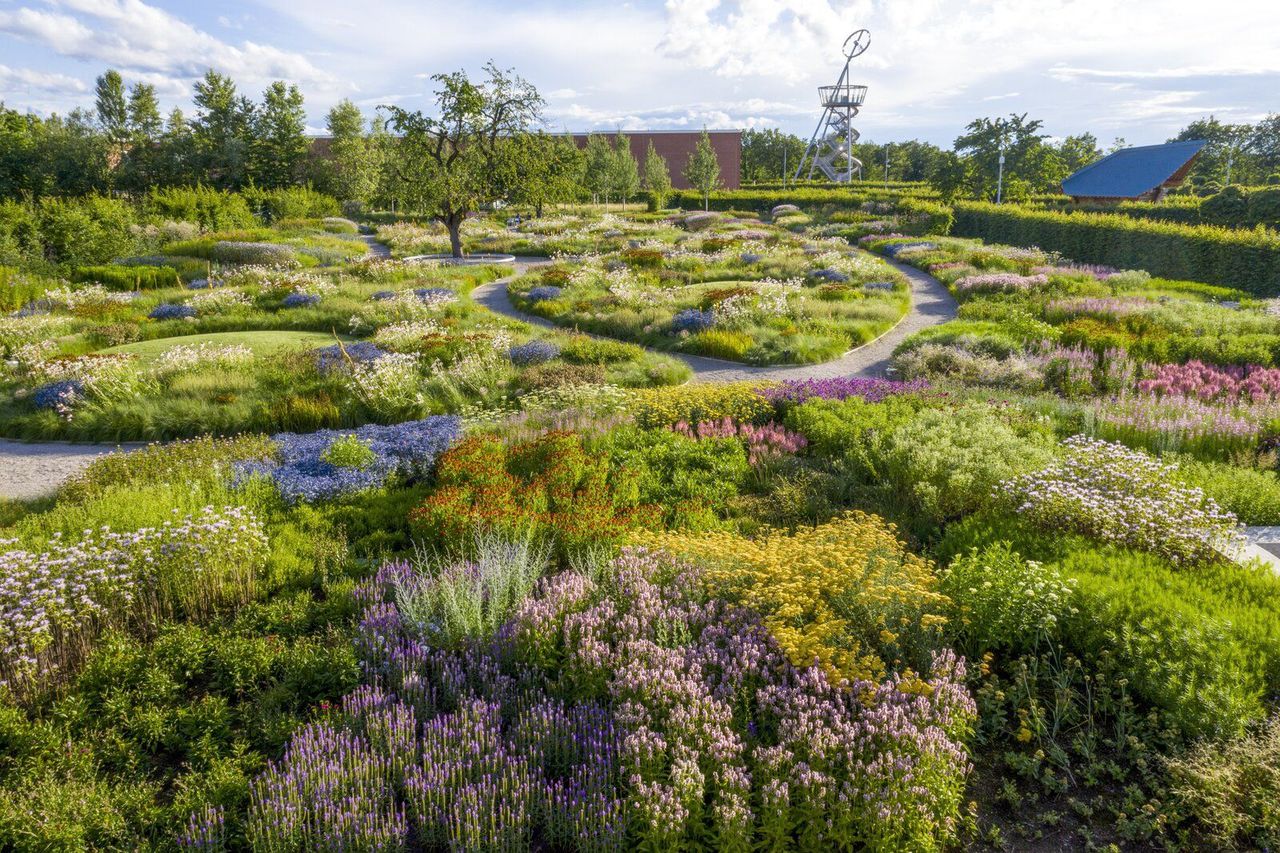
An uplifting palette of warm pinks, lilacs, mauves, and golden tones accents the green of the wild grasses.
With the garden in full bloom, Dwell caught up with Oudolf to learn more about his inspiration, process, and hopes for the garden’s evolution throughout the seasons.
Your garden for Vitra extends an invitation for people to ‘get lost’ in it-a wonderful sentiment, especially after a year of staying in one place. Could you expand on your thinking behind this invitation?
It has to do with the informality of the garden’s layout. As a masterplan, it’s not a sort of strict geometrical or architectural garden with formed lines; it’s more informal, and the alignment keeps you in the garden, more or less, because it circulates throughout and comes back. So there isn’t a real end. It keeps you in the garden, and keeps you involved with the planting. 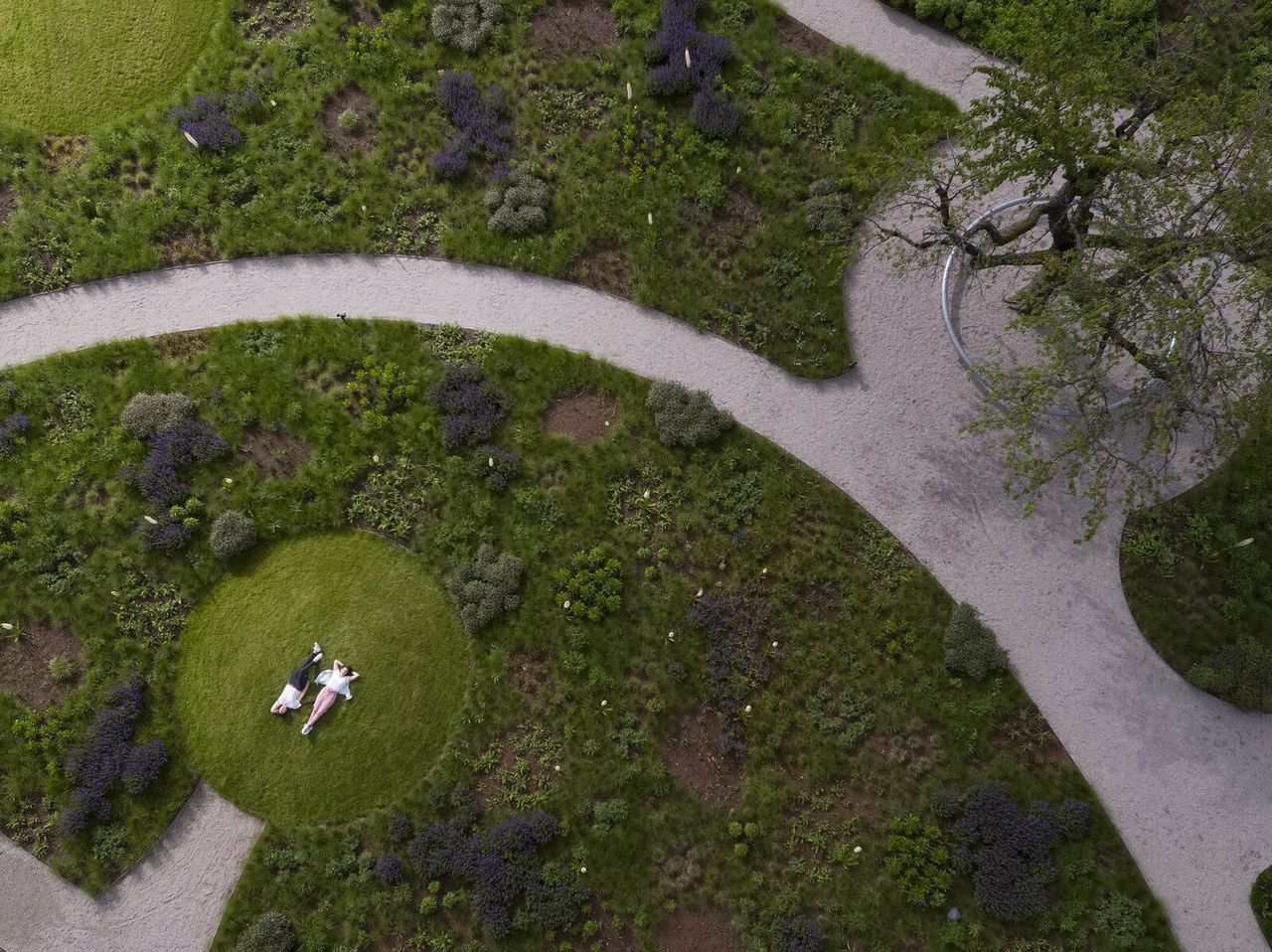
Just like the rest of the Vitra Campus, the garden is open to the public-anyone can visit, enjoy, and engage with its sensorial offerings all year round.
How does your choice of plants respond to the specific characteristics of the landscape and environment at the Vitra Campus, located at the point where Germany, Switzerland, and France meet?
I’m used to making gardens with buildings-it’s never the same, but we work in places where we know all about the plants and what they do together, and how they perform. That’s the first thing. The climate is not an issue for me-because it’s a little bit different from here in Holland, but it’s still a European climate.
The other thing is that the context of architecture makes the garden different-my gardens speak to the context where they are made. At Vitra, it’s a beautiful context, with a flat landscape, and an infrastructure of ways that lead from one building to another. So my garden-especially in front of the VitraHaus [by Herzog & de Meuron-becomes a center point between all the campus’s buildings, and I think it lifts up the whole area.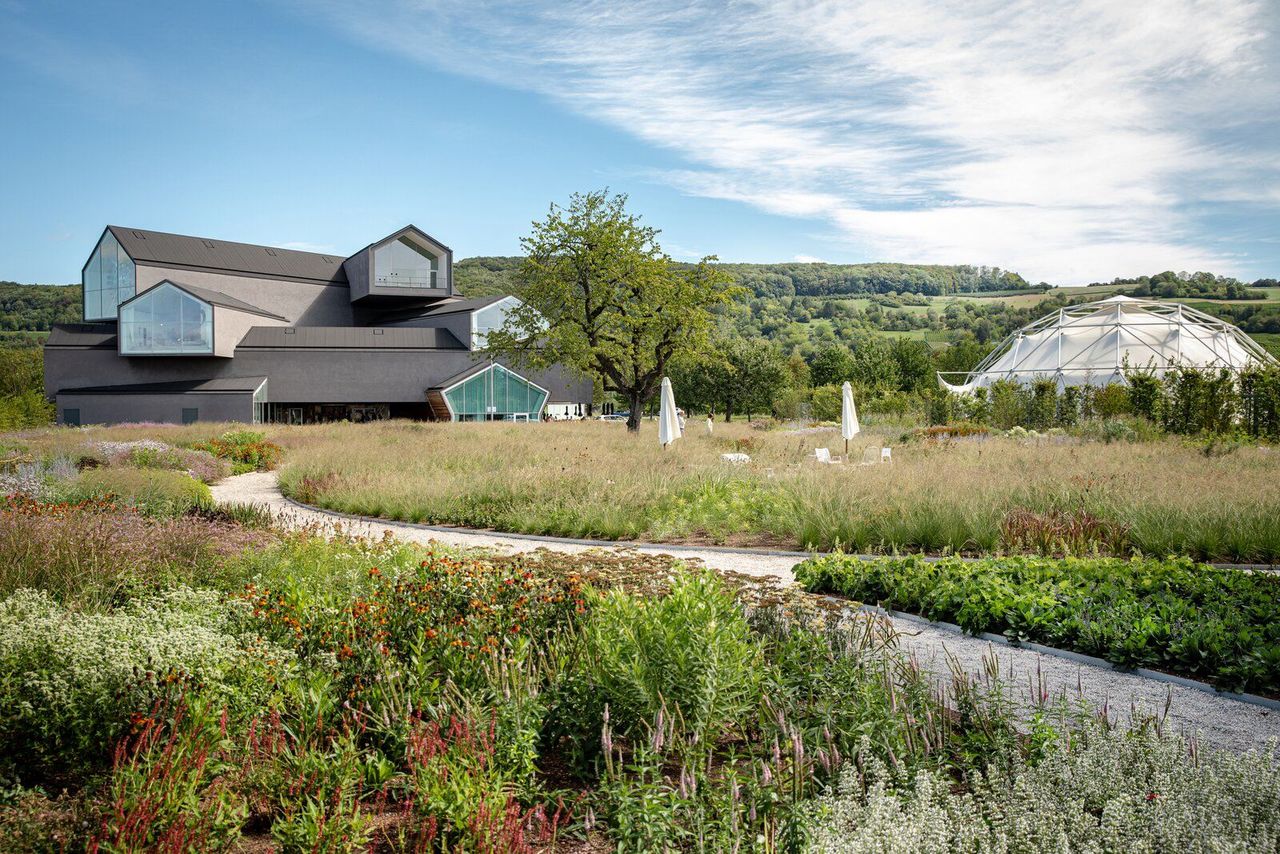
Herzog & de Meuron's VitraHaus, which recently celebrated its tenth anniversary, is connected to the Buckminster Fuller dome via Oudolf’s natural landscape.
How did this collaboration come to be? And how did it unfold?
I was approached by Rolf Fehlbaum, chairman emeritus of Vitra, who showed me around the area, and asked me where I wanted to do the garden. I said, "OK, we can just do it somewhere in the back, or near the Frank Gehry Design Museum, but I think it would be nicer to do it at the entrance." So it became the center point I mentioned.
My profession is more like a promise. Clients know my work, so normally I present a few projects, and then they will say, "OK, what do you think we could do here?" And then I propose a master plan, and a layout, and some planting ideas from gardens I’ve made. There isn’t a long procedure before I start. People believe in me, and that gives me a sort of freedom.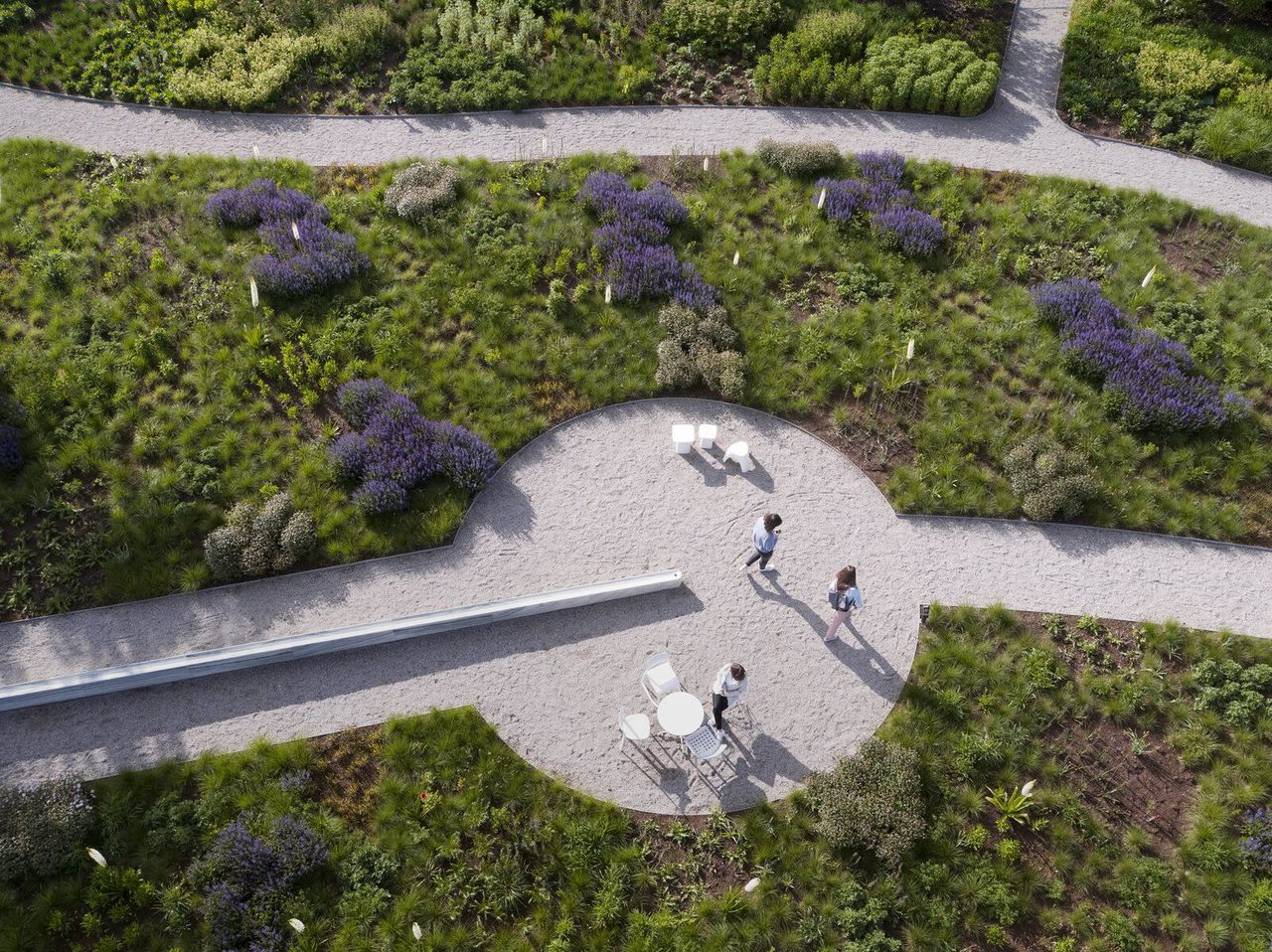
Vitra furniture dotted throughout the garden provides an opportunity to slow down, take a moment, and unwind within a soothing natural setting.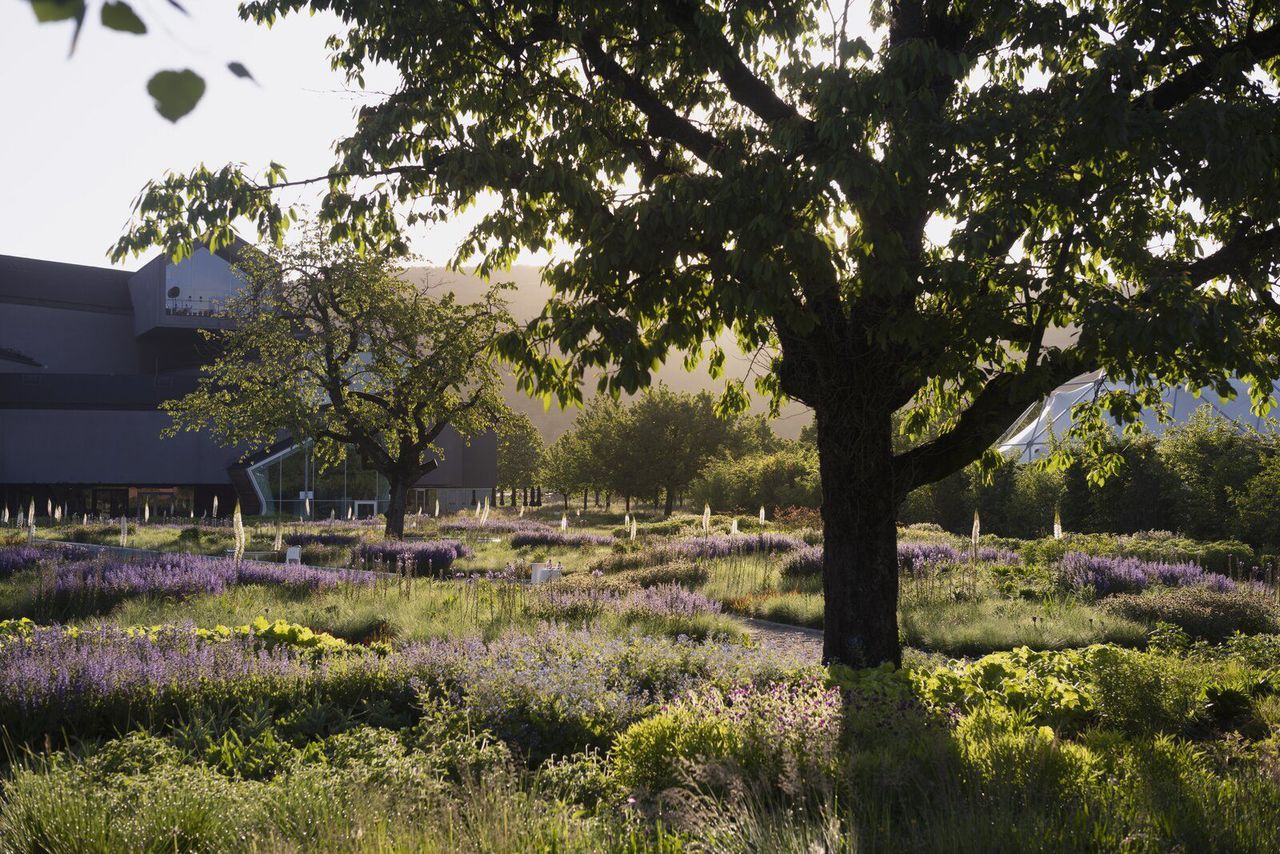
Late afternoon sun illuminates the lush, uninterrupted landscape of perennials and wild grasses that are typical of Oudolf’s approach to garden design.
The garden is intended as a permanent fixture. How can we expect it to evolve-throughout the seasons, and over the years?
I think it will develop in a nicer way; softer, maybe, and more mature. Today, you can still see that the garden was just laid out recently, and I think that it should all grow together. The good thing is that if it’s well-maintained, it will still be there in 20 years’ time. It’ll be different-we’ll allow the garden to change, and we’ll make changes over time-but with good stewardship, the garden will last over a long period.
The sloping curves of the garden path mirror those of the Vitra Slide Tower, designed by Carsten Höller in 2014.
The garden is filled with perennials and wild grasses-as is typical of your work. Could you share some details on the specific plant varieties that you chose?
We used over 150 different species, so it’s hard to say, "OK, this plant has a special place," because it’s like community of people. You all work together, and you put on a sort of performance of plants. Every plant has its own role, and sometimes it’s a role of high importance-or unimportance.
It also depends on the seasonality. Plants that are very silent can burst out in September and become important at that time. So it’s hard to speak about an individual plant, because then you’re talking just about a particular character-whereas all the plants are important, and play their own roles over the seasons.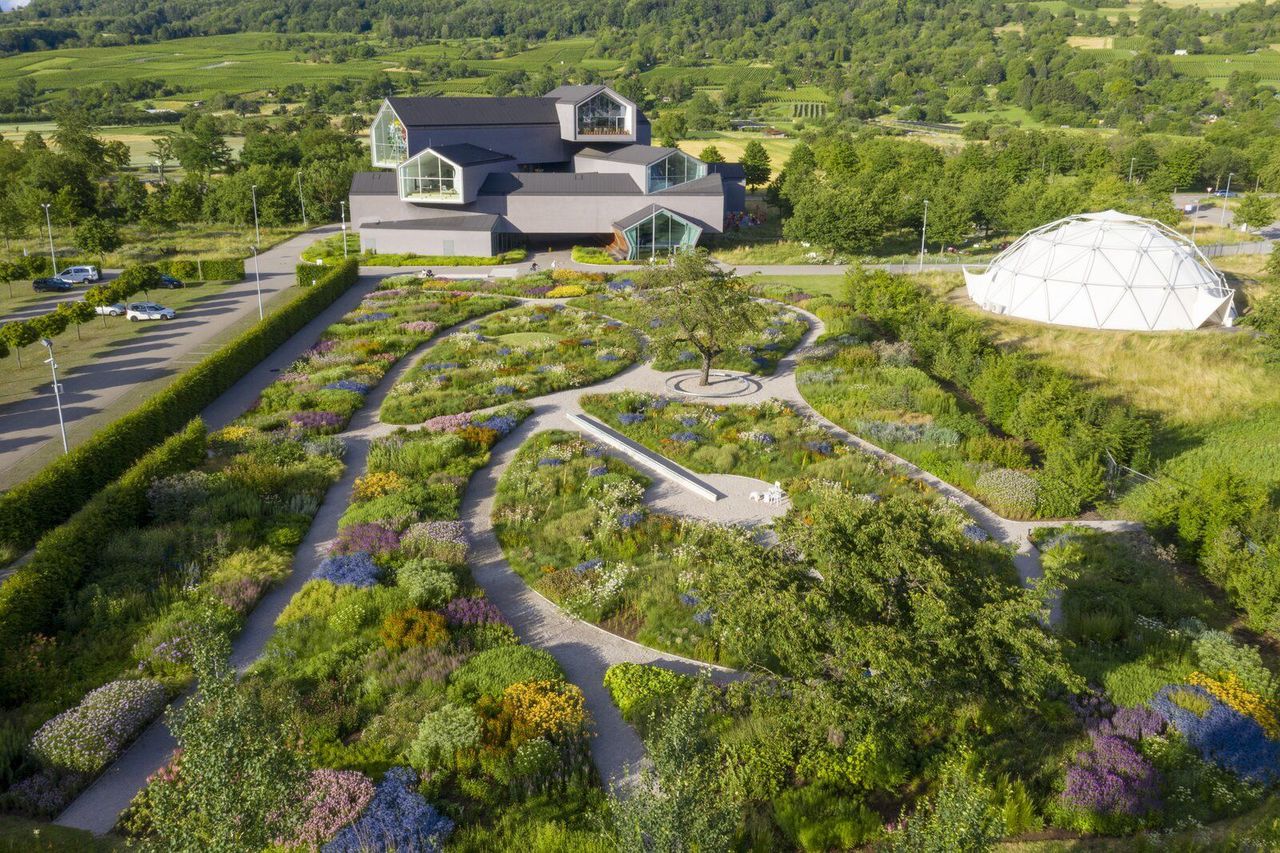
Viewed from above, the gently oscillating pathways of Oudolf's garden reveal themselves.
What do you hope visitors to the Vitra Campus will gain from their experience in the garden?
I think the garden should have an ambience and an atmosphere that draws you in, especially when it is growing in the summer and into the fall. Next to that, there’s a lot of sand, and lots of creatures in the garden that take your attention. I think a garden should have everything a building doesn’t have-wildlife, creatures, butterflies, bees, tastes, smells, seasonality. A garden is constantly growing into another stage over the seasons. And I think that makes people come back, because it’ll be different.
Oudolf chose the VitraHaus as the focal point around which to design the garden.
Located at Charles-Eames-Straße 2, 79576 Weil am Rhein, Germany, the Vitra Campus and the Oudolf Garden within it are open to the public from 12 to 5pm daily. Visitors from Switzerland and France can currently visit the Campus for 24 hours without restrictions, while observing the standard hygiene regulations. Please note the situation can change at short notice. For the latest information, please consult the Vitra Campus website.
Before: A behind-the-scenes glimpse at the early stages of planting in 2019.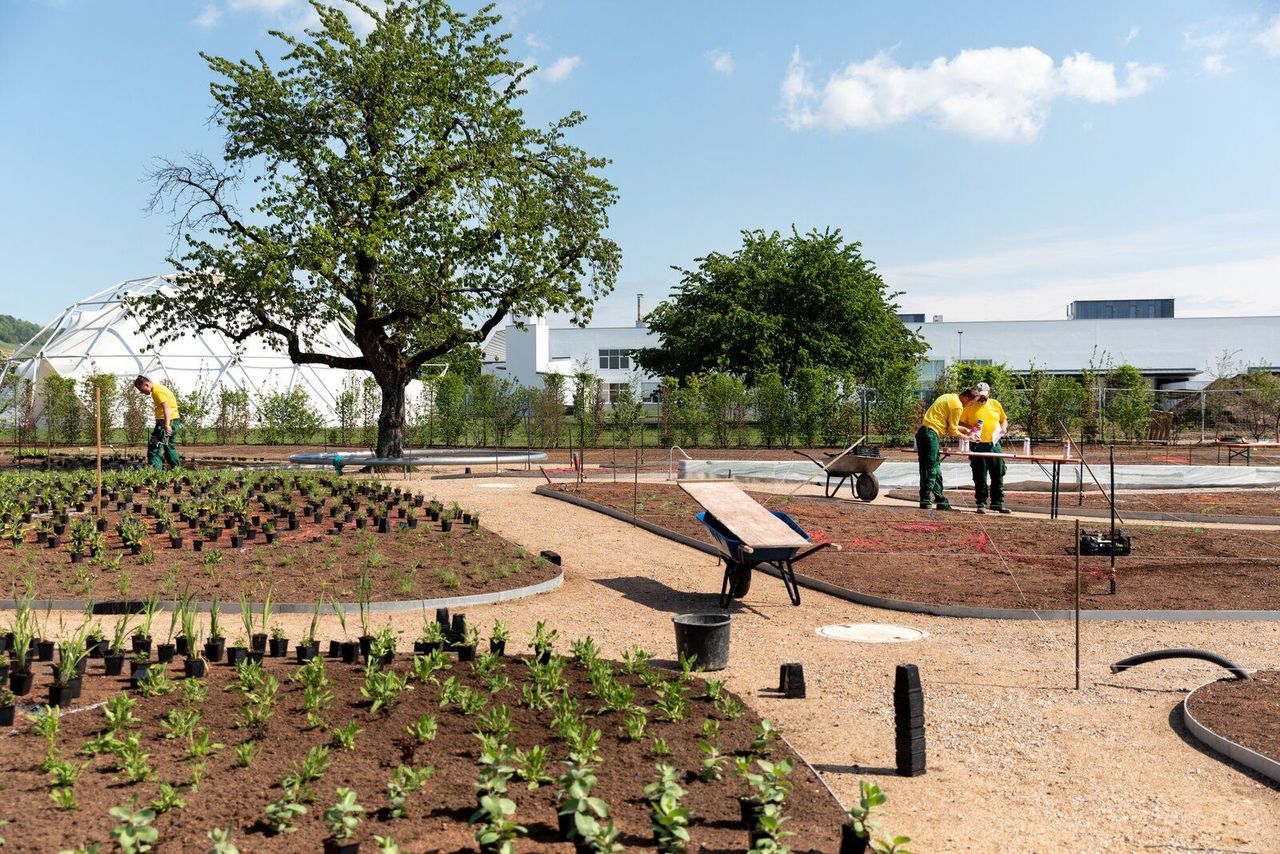
Before: A dedicated team of gardeners worked carefully to implement Oudolf’s design.
Before: Evidence of the meticulous level of detail entailed in the planning of an Oudolf garden.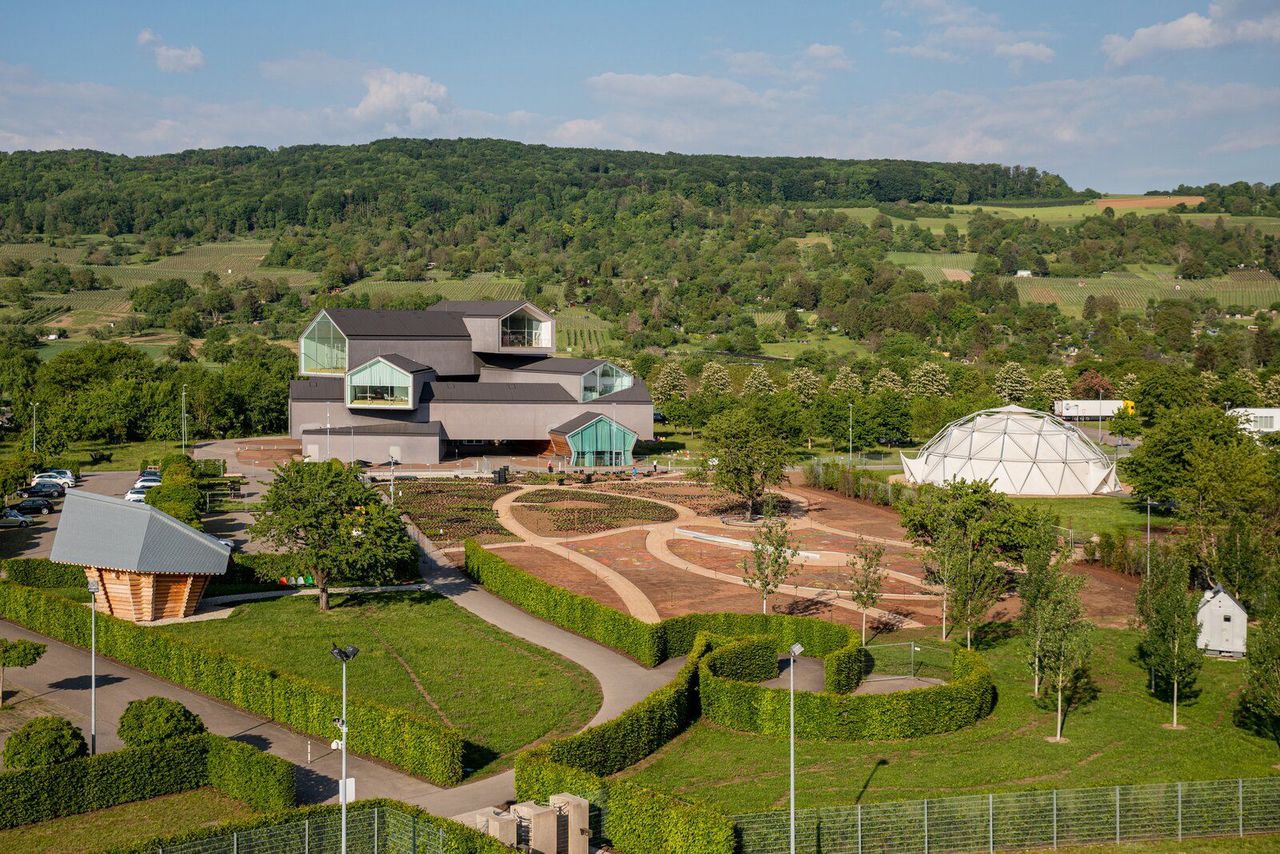
Before: A look at the soon-to-be verdant corner of the Vitra Campus, fringed with hills within a bucolic natural setting.



![A Tranquil Jungle House That Incorporates Japanese Ethos [Video]](https://asean2.ainewslabs.com/images/22/08/b-2ennetkmmnn_t.jpg)









